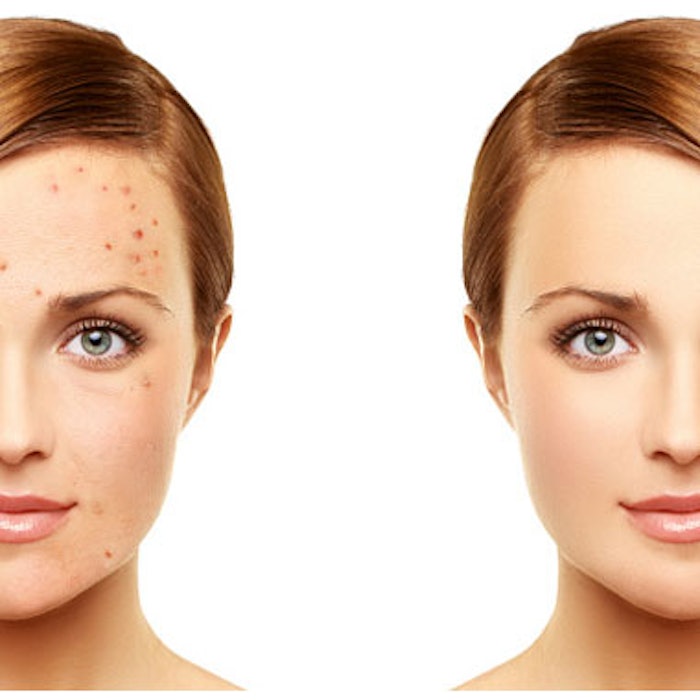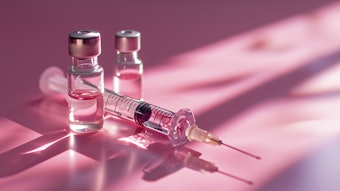
Due to the limited therapeutic options for severe acne vulgaris, researchers D.M. Pariser, MD, et al, investigated a new photodynamic therapy (PDT) treatment protocol using red light and methyl aminolevulinate (MAL).
The double-blind, randomized, vehicle-controlled multicenter trial enrolled 153 patients (aged 12-35 years) with severe facial acne, which was characterized as an Investigator’s Global Assessment (IGA) score of four; 25-75 inflammatory lesions with ≤ three nodules; and 20-100 non-inflammatory lesions. Topical MAL (80mg-1) was used as the photosensitizer. Treatment (four treatments, two weeks apart) involved incubation with MAL (n = 100) or vehicle cream (n = 53) for 90 minutes under occlusion, then illumination (635nm red light, total dose 37J cm-2). IGA assessment and standardized lesion counts were performed before each treatment and 12 weeks after the first treatment. Treatment success was defined as improvement from baseline in IGA by ≥ two grades at 12 weeks. Safety assessments were for pain (10-cm visual analogue scale immediately after illumination), erythema (four-point rating scale) and adverse events.
At 12 weeks, PDT using MAL reduced inflammatory lesions vs. vehicle PDT (mean percentage change -37.3% vs. -16.2%, p = 0.003). However, non-inflammatory lesions did not decrease significantly (mean percentage change -28.6% vs. -24.9%, p = 0.72). Overall treatment success rates were greater with PDT + MAL (44% vs. 26%, p = 0.013). Pain was low and manageable, and there was similar pain or erythema with successive treatments.
The study was published in the British Journal of Dermatology (April 2016).
Photo copyright Getty Images.











